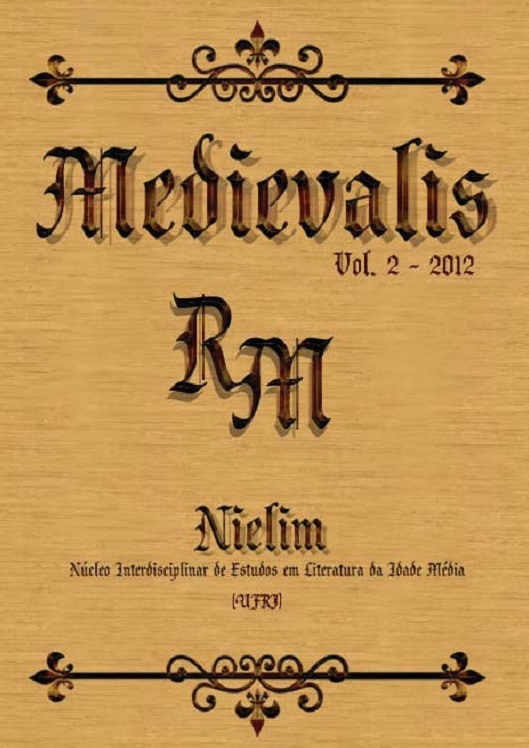Fernão Lopes e Herberto Helder: Heranças mitificadas de Inês de Castro na Literatura Portuguesa
DOI:
https://doi.org/10.55702/medievalis.v1i2.44205Resumo
Resumo: O presente estudo tem como objetivo analisar as heranças do medievo que a figura de Inês de Castro representa na contemporaneidade, tanto na Literatura, quanto no imaginário coletivo. Ao longo dos anos, diversos autores escreveram sobre o tema trágico ocorrido na corte de D. Afonso IV: o assassinato de Inês por “Questões de Estado”. Intitulada “Rainha morta”, a dama é mencionada na Crônica de Dom Pedro, de Fernão Lopes, pertencente à Historiografia e à Literatura, e no conto Teorema, de Herberto Helder, que pertence ao movimento Surrealista. A partir de uma análise comparativa entre essas duas obras, o presente trabalho busca apontar os aspectos que a imagem de Inês de Castro apresenta enquanto mito na Literatura e cultura portuguesa e a contribuição de Fernão Lopes para as interpretações literárias acerca do tema.
Helder, de modo particular, trará uma abordagem diferente das obras que existiam até então. D. Pedro foi grande contribuidor no que diz respeito à consagração da figura da dama; as obras supracitadas trarão perspectivas diferentes sobre o rei, mas que divergem ao mesmo tema: a morte de Inês, a vingança de Dom Pedro e seu processo de mitificação numa relação de troca
entre imaginário coletivo e Literatura.
Palavras-chave: Inês de Castro - Idade Média – Contemporaneidade - Literatura Comparada - Literatura Portuguesa
Abstract: The present study aims to examine the legacies of Middle Ages that the figure of Ines de Castro is in contemporary both in literature, as in the collective imagination. Over the years, several authors have written about the tragic theme occurred in the court of Afonso IV: the murder of Ines by "issues of state." Entitled "Dead Queen", the lady is mentioned in the Crônica de Dom Pedro, of Fernao Lopes, belonging to Historiography and Literature, and the tale
Teorema, Herberto Helder, which belongs to the Surrealist movement. From a comparative analysis between these two works, the present work seeks to identify the aspects that the image of Agnes de Castro presents as myth in literature and Portuguese culture and the contribution of Lopes for the literary interpretations of the theme. Helder, in particular, will bring a different approach that works there until then. D. Peter was the major contributor with respect to consecration of the figure of the lady, the above works will bring perspectives different about the king, but diverge at the same theme: the death of Ines revenge of Don Pedro and his process of mythologizing a relationship exchange between the collective imagination and literature.
Key-words: Ines de Castro - Middle Ages - Contemporary - Portuguese Literature - Comparative Literature

